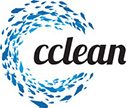CCLEAN has obtained grant funding from the State of California to conduct two major special studies, with broad implications for water quality management.
Persistent Organic Pollutant Concentrations in Southern Sea Otters (Enhydra lutris nereis): Patterns with Respect to Environmental Risk Factors and Major Causes of Mortality
In cooperation with California Department of Fish and Wildlife, CCLEAN was awarded a grant from the California State Water Board to perform a comprehensive study of persistent organic pollutants if archived tissues from 227 freshly dead wild southern sea otters (Enhydra lutris nereis) stranding between 2000 and 2005 along the California coast between San Francisco and Ventura. For each animal a complete necropsy was performed by the California Department of Fish and Game, providing detailed data on each otter’s age class, sex and nutritional condition, as well as data on the primary and contributing causes of death. Consideration of these data, along with each otter’s stranding location and liver POP concentrations permitted detailed statistical analyses of the spatial, environmental and demographic relationships with the detection of high POP concentrations in sea otters, as well as relationships between elevated liver POP concentrations and major causes of sea otter death.
Monitoring and Mitigation to Address Fecal Pathogen Pollution along California Coast
In cooperation with the University of California, Davis and the California Department of Fish and Wildlife, CCLEAN was awarded a grant from the California State Water Board to use both laboratory and field approaches to investigate issues related to water quality monitoring and mitigation of fecal pathogen pollution along the central California coast. Our specific objectives were to 1) evaluate water quality monitoring approaches by characterizing the relationships between FIB and enteric pathogen detection in a broad range of freshwater and marine surface waters along the central coast, 2) consider the relative importance of fecal pathogen loading from different sources, 3) evaluate whether filter-feeding estuarine or marine invertebrates (mussels) may be better indicators of water quality than direct water testing, 4) evaluate microbial source tracking techniques to distinguish between human and animal sources of fecal pollution, 5) characterize patterns of fecal pathogen shedding among terrestrial and marine animals, and 6) evaluate wetlands as a possible Best Management Practice (BMP) to mitigate impairments and improve surface water quality with respect to fecal pathogen pollution.
Effects of River Discharges on Sea Surface Chlorophyll and Suspended Sediments in Monterey Bay
As part of CCLEAN’s routine measurements, nutrient and pathogen data are collected from several streams in the Monterey Bay region. CCLEAN compared SeaWIFS chlorophyll (n=11, 4 sites, N=44) and normalized water leaving radiance at 555 nm (nLw555; n=4, 4 sites, N=16) for reference and “impact” stations near Scott Creek and Pajaro River. Using paired t-tests, CCLEAN found that Pajaro River was significantly different from its reference site, and from Scott Creek. Based on this initial analysis, we proposed to provide a more detailed spatial correlation between river flow and SeaWiFS data. . The final report for this study can be downloaded at SeaWiFS and MODIS Analysis for CCLEAN.
Quantifying the Fate and Transport of Waters at Monterey Bay CCLEAN Sampling Sites
A study was performed to determine whether elevated polychlorinated biphenyl (PCB) concentrations measured in the Monterey Bay waters by CCLEAN could have come from nearby wastewater or river discharges.
